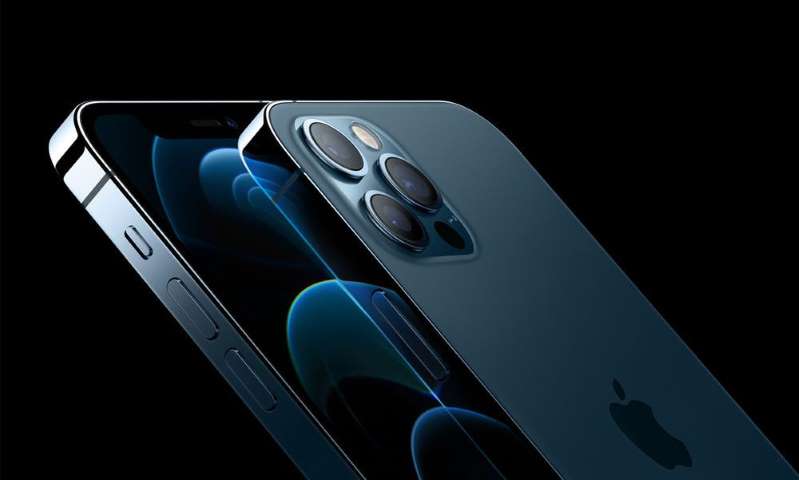Apple has not changed anything in the form factor. There are no notable differences in the dimensions and weight of the iPhone 15. The materials used have also remained the same. However, you will notice a difference if you hold the iPhone 15.
The aluminum frame’s edges have a small amount of bevelling. This gives the device a softer impression, as it feels “softer” in the hand. In contrast, the edges of the iPhone 14 were still really “angular.”
While the surface was still glossy on last year’s iPhone, it now has a matte finish on the iPhone 15—at least on the green colour variant. Otherwise, the back design corresponds to that of the iPhone 14.
The USB-C does well.
Even though Apple has involuntarily switched to the USB-C port, the port change is welcome. However, it is a pity that the iPhone 15 only uses the USB-2 standard, so the data transfer speed is not too high.
For most iPhone users, however, the advantages of the USB-C port can be found elsewhere anyway. For example, borrowing a suitable charging cable is much easier if you have forgotten your own.
USB-C also increases the selection of available accessories. At least you no longer have to look for unique and usually more expensive Lightning accessories with MFi certification (“Made for iPhone”). Apple will abandon this restriction for USB-C in the future.
The dynamic camera hole
Dynamic Island provides a visual enhancement on the iPhone 15. This is the elongated camera hole in the screen where the Face ID sensors and the selfie camera are hidden. Since all new iPhones now have such a recess in the display, the vast and iconic bar notch should be history, at least for the standard models. It is conceivable that it will come, at least in the future, with the iPhone SE.
However, Dynamic Island is not just an ordinary camera hole. Depending on the app and use case, the black island becomes an interactive control panel displaying additional information. For example, a timer, the current music playback, or the live score of a soccer match can be shown there.
The interactive camera hole gives the iPhone 15 a more modern look and, at the same time, brings a new operating concept. In my everyday life, it has turned out that many an interactive display on the Dynamic Island is more practical than previously expected.
A huge disappointment
Besides the camera island, the high-quality screen can create one more innovation. The maximum peak brightness and the high-brightness mode (HBM) have been increased significantly. If the sun shines directly on the screen, the intelligence can quickly grow up to 2,000 nits. The HBM is now 1,000 nits.
At the same time, the display comes with a big disappointment. The refresh rate has not been increased and remains at 60 Hz. Without a dynamic refresh rate, there is still no always-on display on the iPhone 15.
Every time you unlock the lock screen and the corresponding animation bumps across the screen, with every scroll and swipe, you’re reminded that the display doesn’t have 120 Hz and can’t display moving content as smoothly.
It is a bit cheeky that a smartphone in 2023 that costs close to 1,000 Euros does not have an increased refresh rate. Even though the screens are not comparable in quality, almost every Android phone from 140 Euros upwards now has a refresh rate of 120 Hz.
Camera with higher resolution
The primary camera’s resolution has been increased from 12 to 48 MP. Apple now also uses pixel-binning technology in its standard devices. In this process, 4 or 2 pixels are merged into one larger pixel, which is supposed to lead to higher light capture, especially in poor ambient light.
Pixel binning means the photos are still saved with 12 MP by default. However, you now have the choice to permanently save pictures with 24 MP or to use the full resolution of 48 MP for individual shots.
This results in high-quality photos with a high dynamic range, good contrasts, vivid colours, and outstanding brilliance. The same applies to the wide-angle lens, which hardly requires any compromises compared to the primary camera—at least in daylight.
The improved camera software contributes significantly to the high picture quality. This is mainly seen in portrait and night modes, where the evening mood is usually reproduced flawlessly.
Even though the front camera is now located on the Black Island, it is unchanged compared to last year’s device. There are some losses compared with the primary camera, but it delivers usable selfies in most situations.
There is nothing to criticize about the video quality: The image noise is within limits, the dynamic range is high, and the camera can handle light-shadow changes well. Those who mainly want to use their iPhone for videos should consider buying a Pro because it offers higher quality and professional tools.
The new old processor
The iPhone 15 is powered by an A16 Bionic (4nm) used in the Pro models last year. Even though the processor is already a year old, it still delivers more than enough power and good energy efficiency.
The A16 will certainly not break a sweat in everyday apps. Even batch editing of a dozen photos is done in a few moments, and everything works without significant delays when editing video clips.
Battery life and charging performance
Apple has never been known for its high-charging performance. Even the switch to USB-C does not change this fact. Even though Apple makes a secret of a watt specification, the iPhone 15 should not be able to be charged with more than 20 watts.
According to Apple, 50 percent should work out in 30 minutes.
Conclusion
Apple is not taking any risks with the iPhone 15. All innovations have been proven for a year in the 14 Pro devices, including Dynamic Island, the brighter screen, the A16 Bionic chip, and the 48 MP camera. The switch to USB-C was long overdue and will benefit iPhone users daily.
Nevertheless, the innovations in the iPhone 15 are welcome and give the device more power, better energy efficiency, a more brilliant display, and a better camera. Dynamic Island may seem like a gimmick in the first place, but it has established itself as a practical and stylish tool for everyday use.
The innovations are overshadowed by the meagre refresh rate of 60 Hz. It is disappointing that Apple has still not provided an upgrade here.
This year’s iPhone is a solid device that will keep a high-quality smartphone in your pocket for years. Even though this year’s iPhone models have become cheaper, they still have a handsome price tag.
Should I buy an iPhone 15?
This question can only be answered with the following counter-question: Which device are you using? Whether upgrading to the iPhone 15 is worthwhile depends mainly on that.
The iPhone XS, XR and XS Max from 2018 are the oldest iPhones that have received the latest iOS 17 and will probably fall out of the iOS update cycle next year. In this respect, upgrading to the 15 model makes perfect sense.
Those who use an even older device that no longer receives the latest iOS software should consider an upgrade. It is only a matter of time before apps stop supporting old iPhones.
Since the iPhone 11 does not yet have an OLED screen, is comparatively heavy, and is not 5G-capable, an upgrade to an iPhone 15 model would likewise involve far-reaching improvements.
The innovations are much less significant for the iPhone 12 and iPhone 13. Those with an iPhone 14 can still stick with it; the differences are only marginal.
- source: futurezone.at/picture: apple.at
This post has already been read 4934 times!



